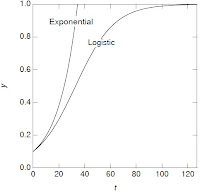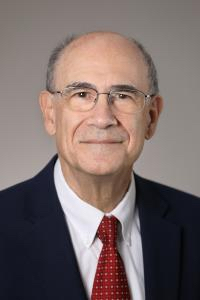In
Intermediate Physics for Medicine and Biology,
Russ Hobbie and I don’t talk much about
surface tension. However, in
Air and Water,
Mark Denny devotes several chapters to it. He begins
We are now at the first of three chapters in which we explore the physics of the interface between water and air. As we will soon discover, the interface is a bizarre and fascinating place. To begin with, it is truly two-dimensional: it has neither outside nor inside. It is not contained in the water nor is it contained in the air; it is simply the place at which they meet. As such, its properties are not those of air or water alone, but of their mutual interaction, and these can be both surprising and nonintuitive…
We begin this exploration with an examination of the phenomenon known as surface tension. This is the force that keeps water droplets spherical, and it has a variety of biological consequences. For instance, we will see how surface tension allows trees to grow to majestic heights and flies to adhere to glass; how surface tension allows some insects to breathe under water and others to walk upon it.
Surface tension arises because a
water molecule is usually
hydrogen bonded to several other water molecules surrounding it. On the water surface, however, there is at least one hydrogen bond missing, so a higher surface energy is required to produce additional surface area. The surface energy of water in air is denoted
γ and has a value of 0.07 J/m
2. This is a fairly high surface energy compared to most other liquids (for instance, everyone’s favorite,
ethanol, has a surface energy of only 0.02 J/m
2).
After explaining the origin of surface energy, Denny adds an important caveat.
In nature it is extremely rare to find an air-water interface that is not fouled to some extent with an ill-defined organic film. Most biological molecules (fatty acids in particular) can lower the surface energy to a fraction of that found in pure water. As a result, the surface of all but the cleanest bodies of water is likely to have a lower surface energy than reported here.
Denny then relates the concept of surface energy to that of surface tension.
To this point we have discussed the air-water interface in terms of its surface energy. Why, then, is this chapter entitled “Surface Tension”? It turns out that surface tension is just another way of expressing surface energy.
In the abstract, this is easily seen by comparing the units of the two expressions. Surface energy is expressed as J m−2. But a joule is one newton meter, so J m−2 is the same as N m−1, that is, force per distance, a tension.
Surface tension is related to the concept of
capillarity. Water tends to adhere to a clean glass surface. Therefore, water will rise in a hollow glass tube until it reaches a height at which the weight of the column is balanced by the adhesion force. This height is proportional to the surface tension and is inversely proportional to the radius of the tube. Denny observes that
Because the water in the tube is, in essence, hanging from the air-water interface, it is at a lower pressure than that of the surrounding air. As a result, if one were to poke a hole in the side of the tube, air would be drawn in rather than water being forced out.
Denny shows how capillarity is used to
get water up a tree. Even more interesting is his discussion of
insect tracheae.
Consider, for instance, the problems faced by insects. These animals rely on their tracheae and tracheoles to deliver oxygen to their muscles and to remove carbon dioxide… This system works only because the tracheae are tracheoles are filled with air. If these small tubes become filled with water, the rate at which they transport O2 and CO2 decreases 10,000-fold [because of the 100-fold difference of the diffusion constant in air and water]. How does the respiratory system of insects keep from filling up with water via capillarity?
The answer is likely to be that the inner surface of the respiratory system is coated with some substance that is not wetted by water… If the tracheae and tracheoles are coated with a waxy substance similar to that found on the external cuticle of many insects, water has no tendency to fill the system, and effective respiration is possible.
Denny then analyzes the law of Laplace, relating the air pressure inside a bubble to its radius and water’s surface tension. Russ and I analyze the case of a spherical bubble in Homework Problem 60 of Chapter 3 in IPMB.
Denny concludes the chapter by examining animals that can walk on water.
The surface of lakes and streams provides a unique opportunity for terrestrial organisms. An animal that can walk on water has available to it a flat substratum from which to hunt aquatic prey and a refuge on which to escape from predators. There is just one problem: How does an animal manage to walk on water?
Surface tension, of course, provides the answer. If the animal contacts the water with a nonwettable structure of sufficient perimeter, the upward force of surface tension can support the organism’s weight.
This only works for small animals.
The prospect of walking on water becomes less likely the larger the animal becomes. The crux of the problem is that an animal’s weight increases as the cube of a linear measure of its size, whereas the force due to surface tension increases in direct proportion to a linear measure (in this case, perimeter). For example, a mouse with a mass of 100 g weights 1 N. If the animal had feet coated with the same wax available to a water strider, it would need a perimeter of 40.3 m in contact with the water, roughly 10 m per foot. Feet of this size would clearly be impractical, and for this reason animals the size of mice do not walk on water.








